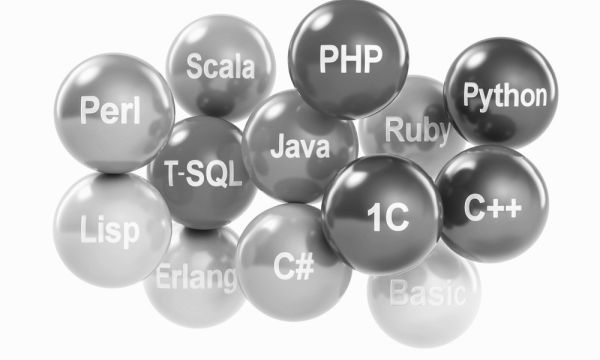Navigation

Related Post
Programming Languages
Programming Languages are formal systems used to give instructions to computers. They enable software developers to write code that computers can understand and execute.
These languages serve as the foundation for creating all types of software, from mobile apps to enterprise systems. In IT organizations, programming languages are essential for building, maintaining, and automating digital solutions. Choosing the correct programming language depends on the project’s goals, required performance, and compatibility with existing systems.
Section Index
- Key Aspects
- Syntax and Rules
- Language Levels
- Performance and Scalability
- Community and Libraries
- Task-Specific Uses
- Conclusion
- The Programming Language Guide – 24 mins
Key Aspects
- Programming languages provide the syntax and rules for writing software code.
- They are categorized into different levels, such as low-level and high-level languages.
- Language choice affects software performance, scalability, and development speed.
- Popular languages often have strong community support and robust libraries.
- IT teams use different programming languages for specific tasks, such as web development or data analysis.
Syntax and Rules
Programming languages are governed by specific syntax and grammar rules, much like spoken languages. These rules determine how code must be written to be valid and executable by a computer. For example, languages like JavaScript use curly braces {} to define code blocks, while Python uses indentation. Developers must adhere closely to these conventions to avoid syntax errors that can prevent a program from running.
In IT environments, understanding the syntax of a chosen programming language is essential for code readability and maintenance. Teams often standardize on particular coding styles and conventions to ensure that codebases remain consistent, especially in large projects. Tools like linters and integrated development environments (IDEs) help enforce these rules and assist developers in writing clean code.
Language Levels
Programming languages are classified by their level of abstraction from hardware. Low-level languages, such as Assembly or C, offer more direct control over system resources but require detailed management of memory and operations. High-level languages like Python, Java, and Ruby are easier to write and read, thanks to more human-friendly syntax and automated features.
In IT organizations, high-level languages are typically favored for application development and automation due to their speed of development and ease of debugging. However, low-level languages remain crucial in areas that require high performance or system-level programming, such as embedded systems or operating system kernels.
Performance and Scalability
The performance and scalability of software can vary significantly depending on the programming language used. Languages like C++ or Rust are known for their high performance in computing tasks because they compile directly to machine code. In contrast, languages like PHP or Python may offer slower execution but benefit from faster development cycles.
In IT settings, the choice of language often strikes a balance between speed and efficiency. Backend systems with heavy traffic, such as those using Node.js or Go, are chosen for their ability to scale efficiently. Teams must consider runtime efficiency, memory usage, and concurrent processing needs when selecting a programming language for scalable applications.
Community and Libraries
Popular programming languages tend to have large communities and rich ecosystems of libraries and frameworks. For example, JavaScript has extensive support for web development through libraries like React and frameworks like Angular. Python’s strong presence in data science is supported by libraries such as NumPy and Pandas.
For IT professionals, community support can be a significant factor in language selection. It ensures access to tutorials, code samples, and problem-solving forums, such as Stack Overflow. Well-maintained libraries also reduce the need for writing code from scratch, speeding up development and increasing reliability.
Task-Specific Uses
Different programming languages are suited to different IT tasks. For example, JavaScript is a standard for frontend web development, while Java and Kotlin are commonly used for Android app development. SQL is essential for managing databases, and R is frequently used in statistical computing and analytics.
IT organizations often rely on multiple languages within the same project or across different teams. Choosing the right tool for each job ensures optimal performance and maintainability. Understanding the strengths and limitations of each language enables teams to deploy the most effective solutions for their unique technical challenges.
Conclusion
Programming Languages are a cornerstone of IT work, enabling teams to create, manage, and optimize digital solutions. Their careful selection and use shape the effectiveness and efficiency of technology across organizations.
The Programming Language Guide – 24 mins
